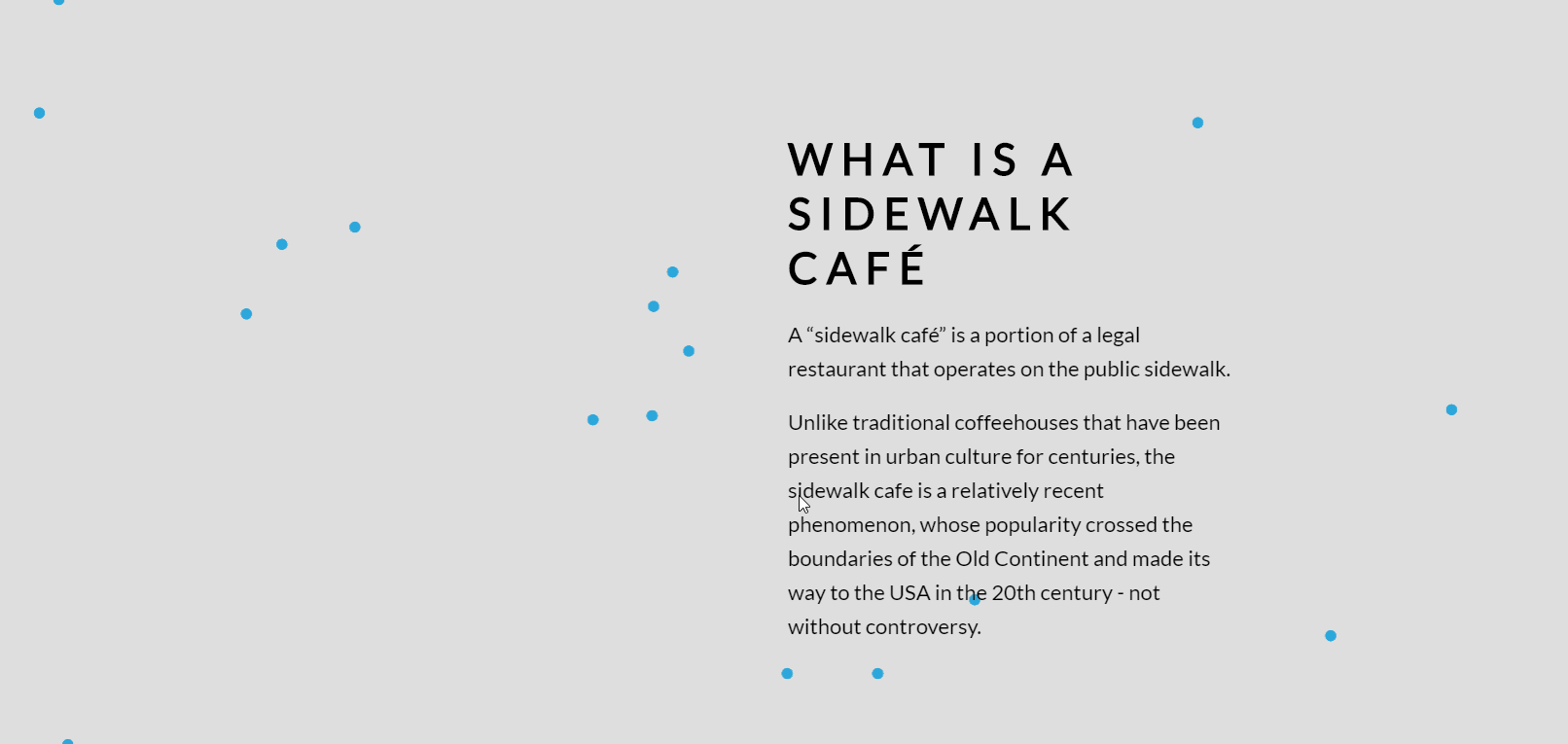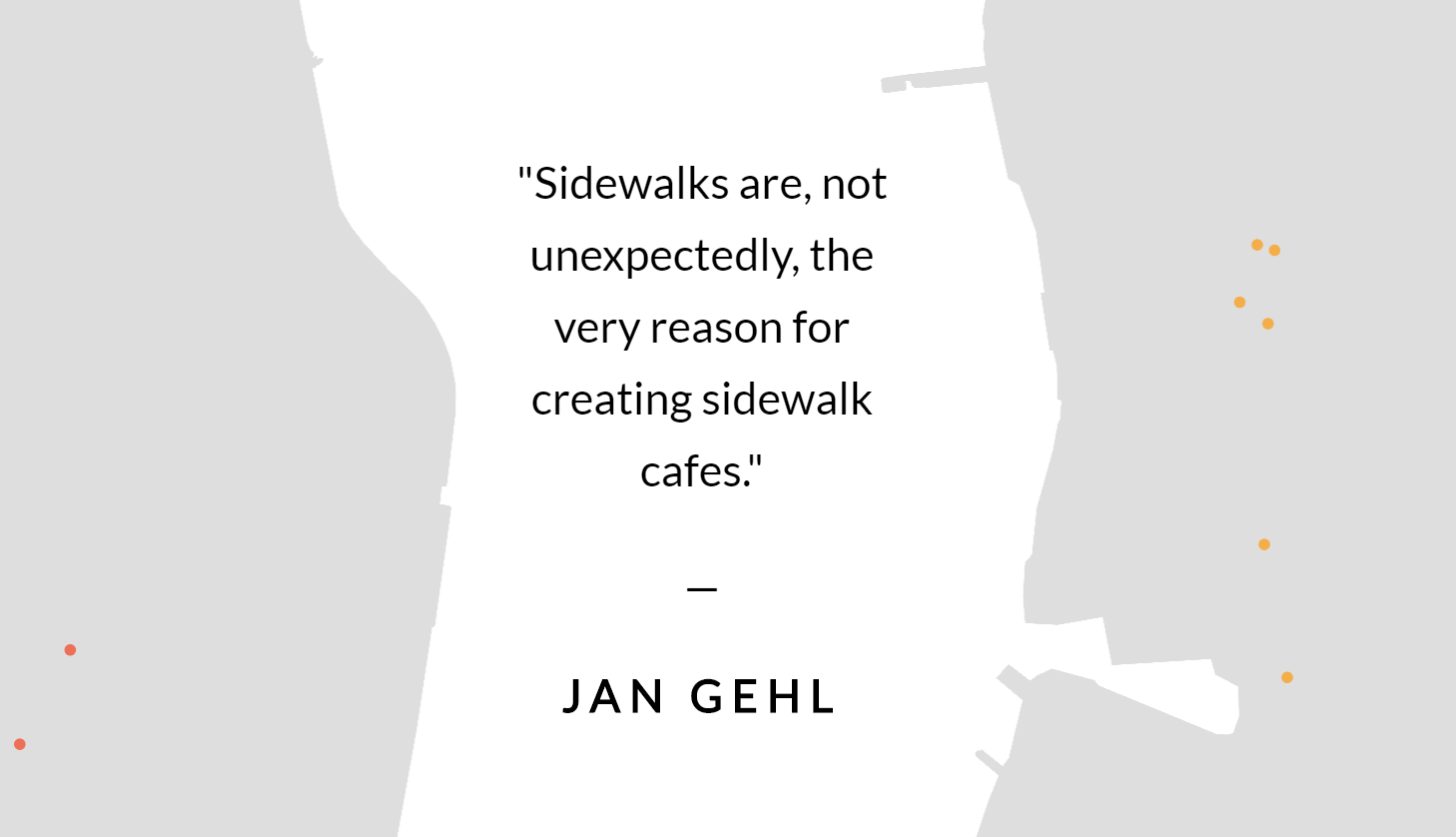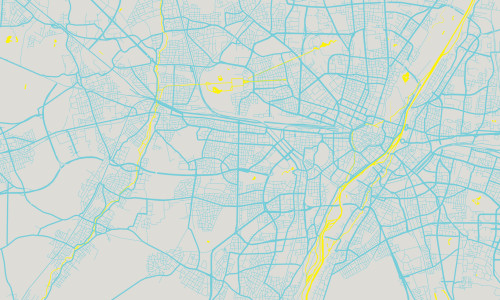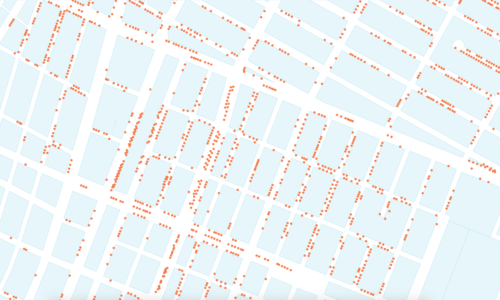We have recently explored Sidewalk Cafés Licensing Data, provided by the NYC Department of Consumer Affairs.
We’ve used mapbox-gl-js to create an interactive story line, that will highlight different locations and aspects of the data.
A “sidewalk café” is a portion of a legal restaurant that operates on the public sidewalk. There are three main types of sidewalk cafés – enclosed, unenclosed and small unenclosed sidewalk cafés. A combined license is also available for cafés located on corners, where zoning regulations for different types intersect. Currently, there are over 1500 active sidewalk cafés in New York city with the majority of them located in Manhattan. Unenclosed sidewalk cafés happen to be the most popular type and represent 75 percent of the total number of active sidewalk cafés in the city.

Unlike traditional coffeehouses that have been present in urban culture for centuries, the sidewalk cafe is a relatively recent phenomenon, whose popularity crossed the boundaries of the Old Continent and made its way to the USA in the 20th century – not without controversy .
In 1929, New York City started legally allowing unenclosed sidewalk cafes. Soon after, in 1933, they were banished by H. Warren Hubbert, Manhattan’s commissioner of public works, and it wasn’t until the mid-1960’s that city officials began to endorse the spread of this continental touch. In the beginning of the 60’s there were around 30 sidewalk cafes in NYC, located mostly in Greenwich Village.

Currently, sidewalk cafes are regarded as neighborhood amenities that encourage social interactions and allow people to engage in street life or simply to enjoy the “sidewalk ballet“. Outdoor sitting is highly valued by urban planners and is considered to have a positive impact on street vitality. Since sidewalks represent a huge fraction of the city’s public spaces, they are – as Jan Gehl puts it – the very reason for creating sidewalk cafes.



